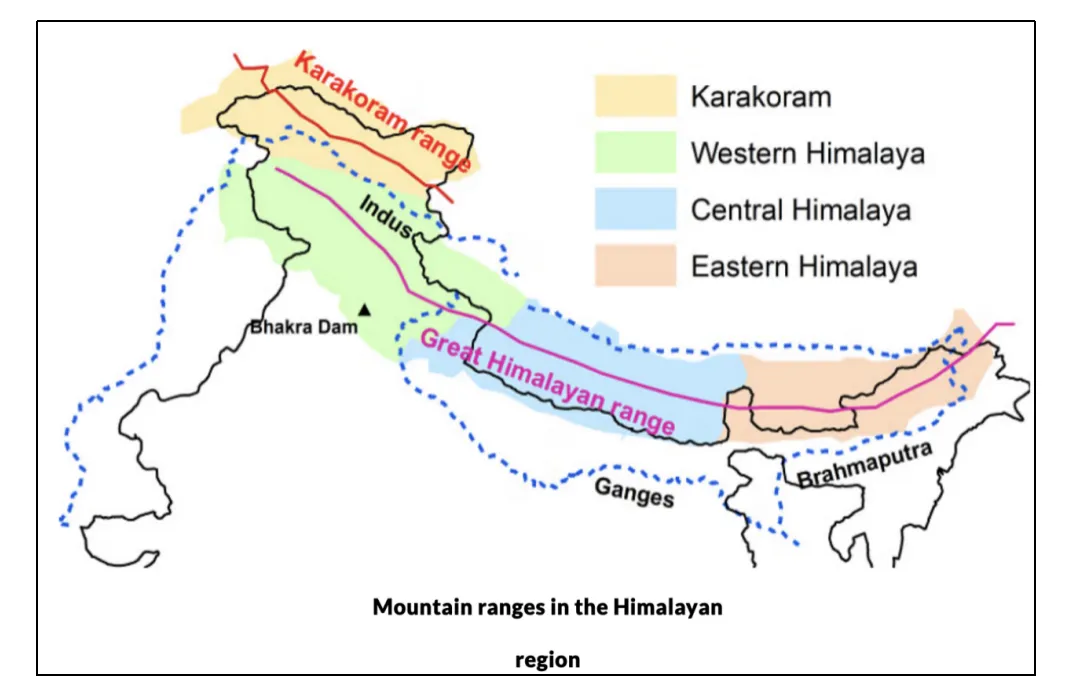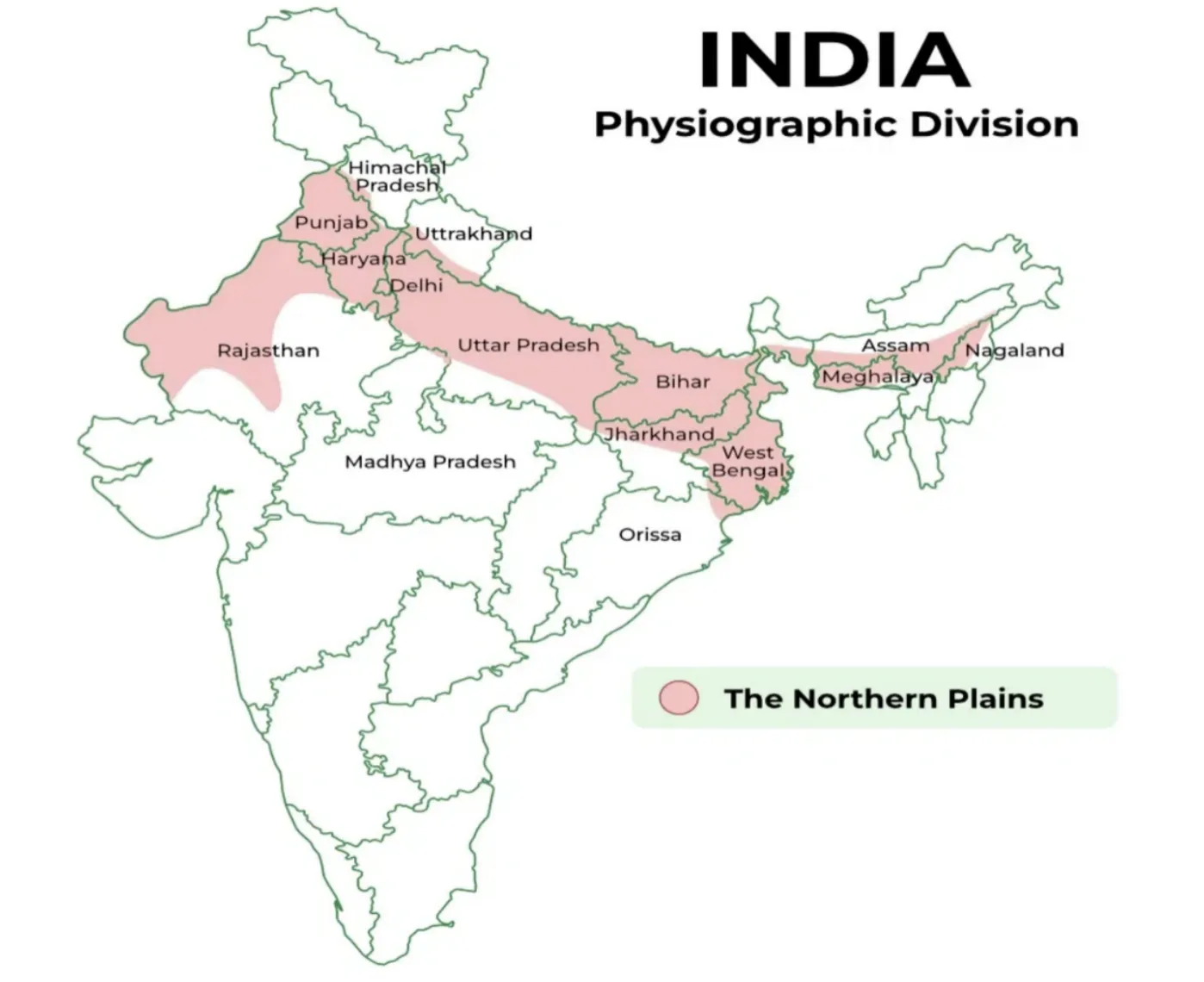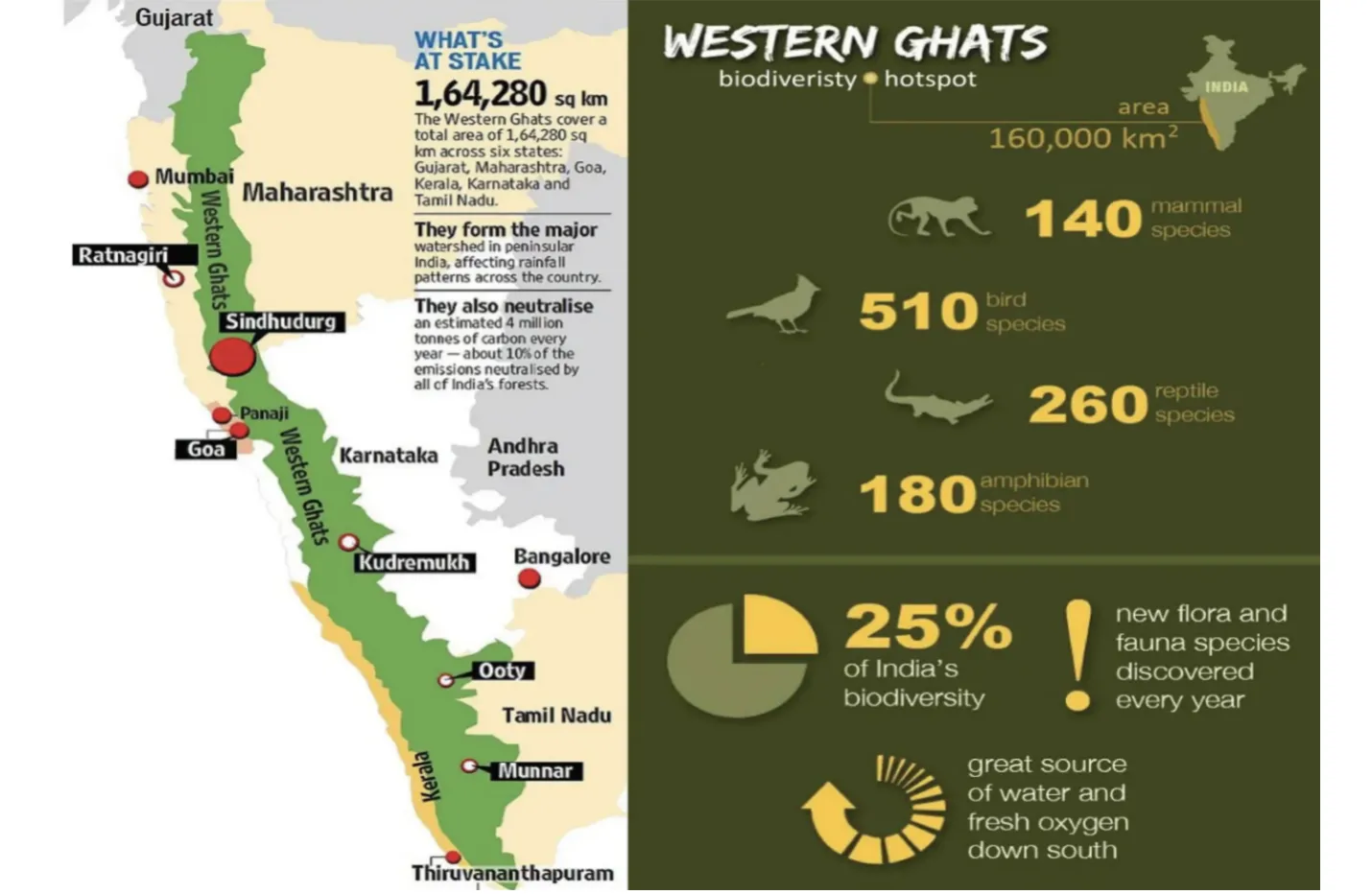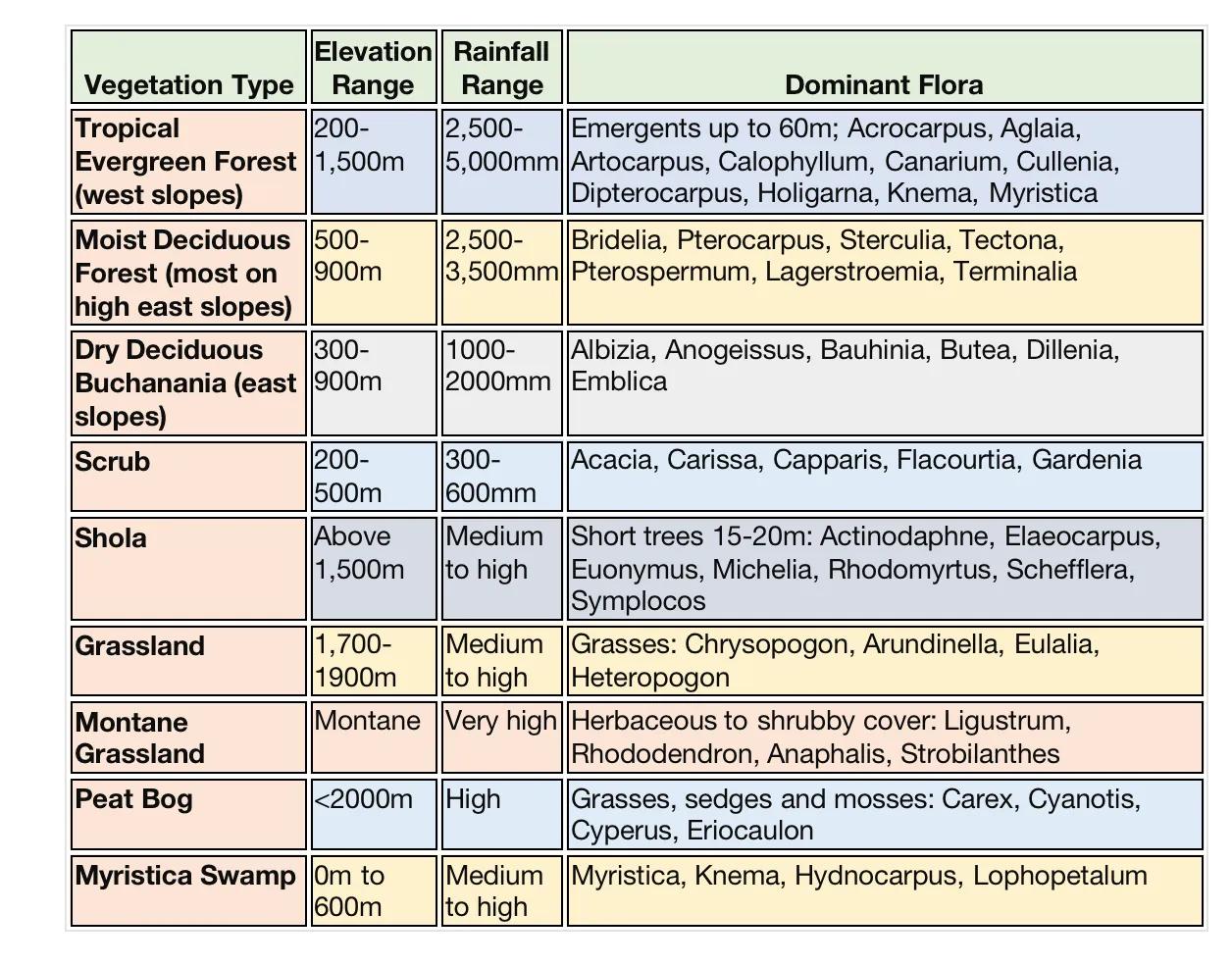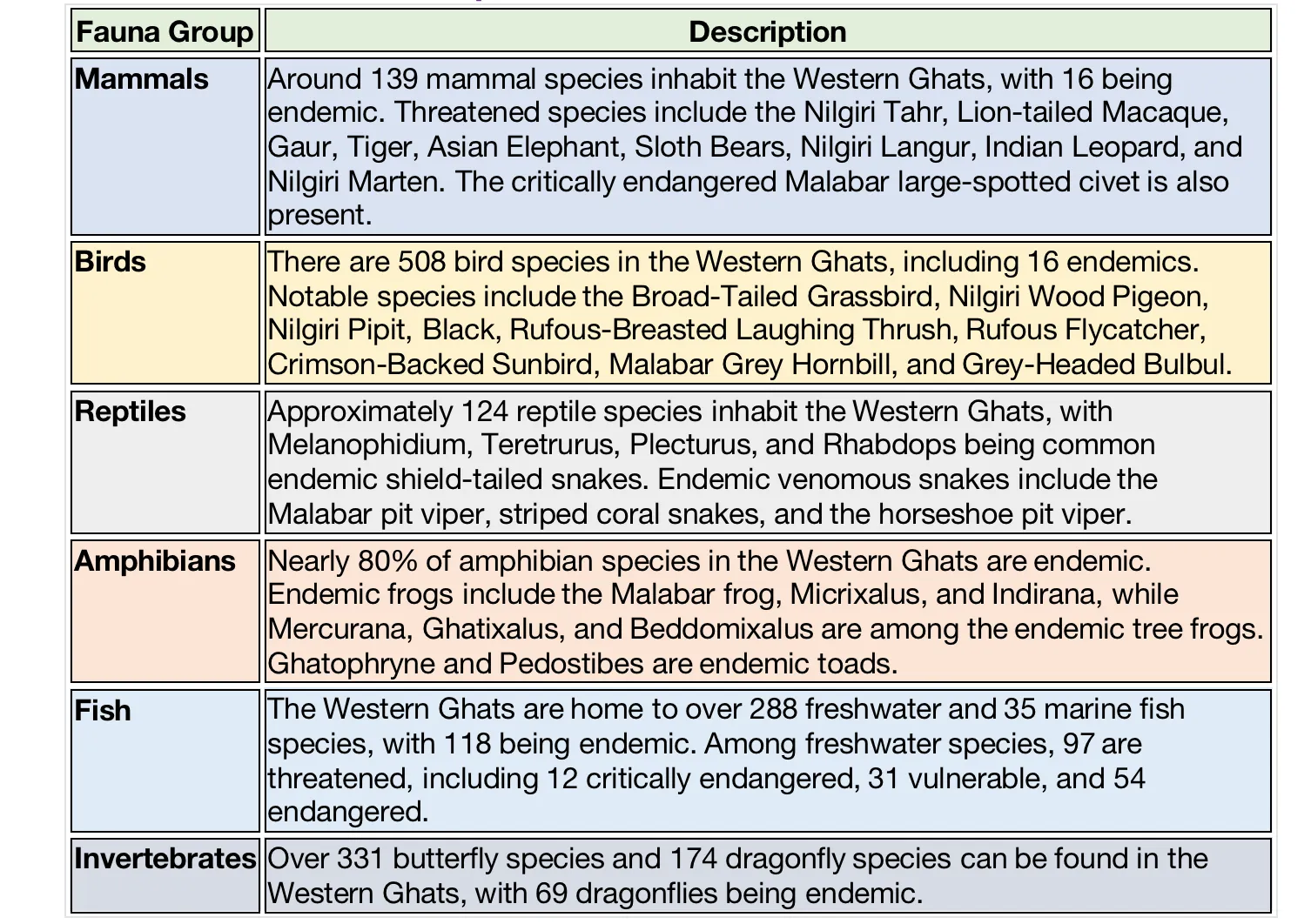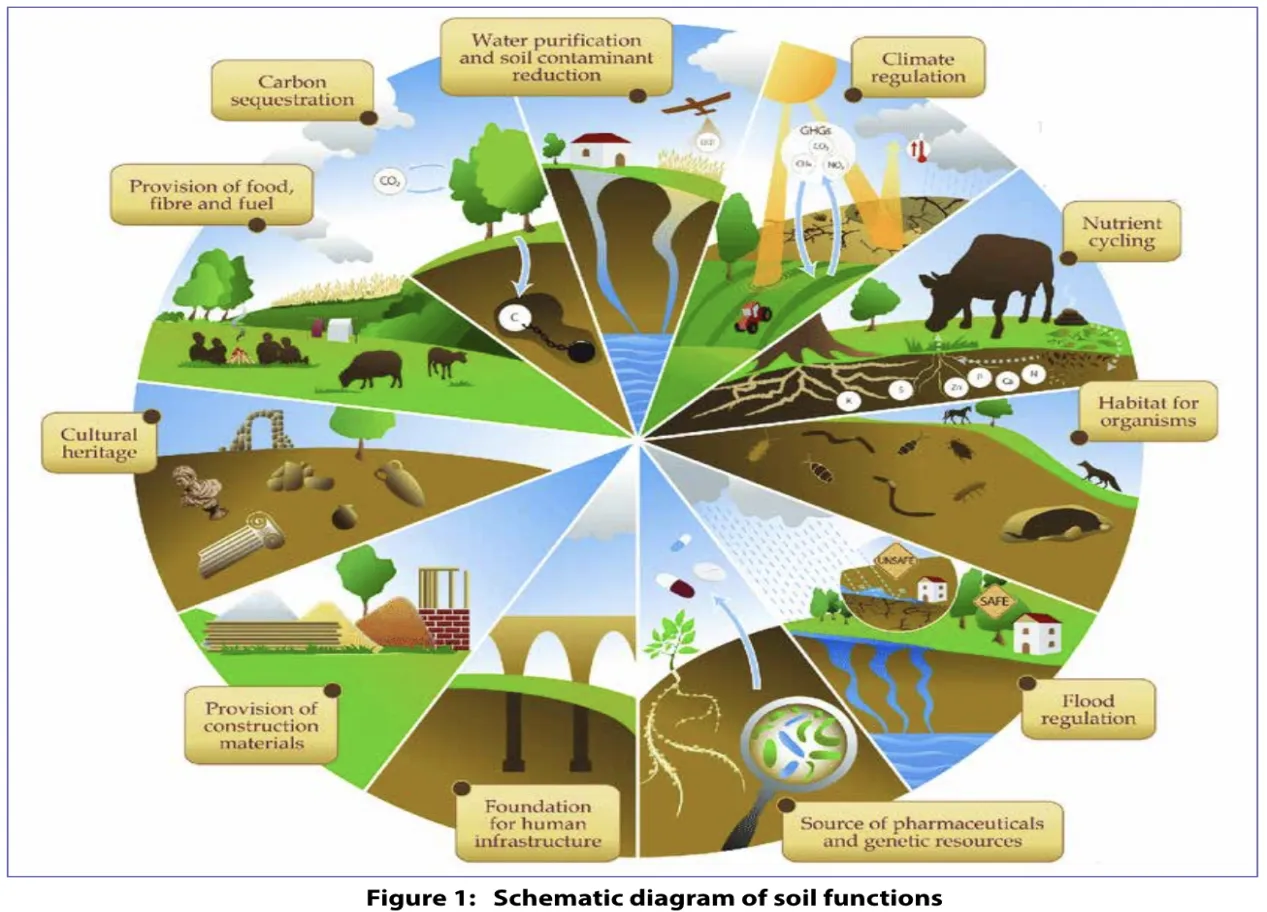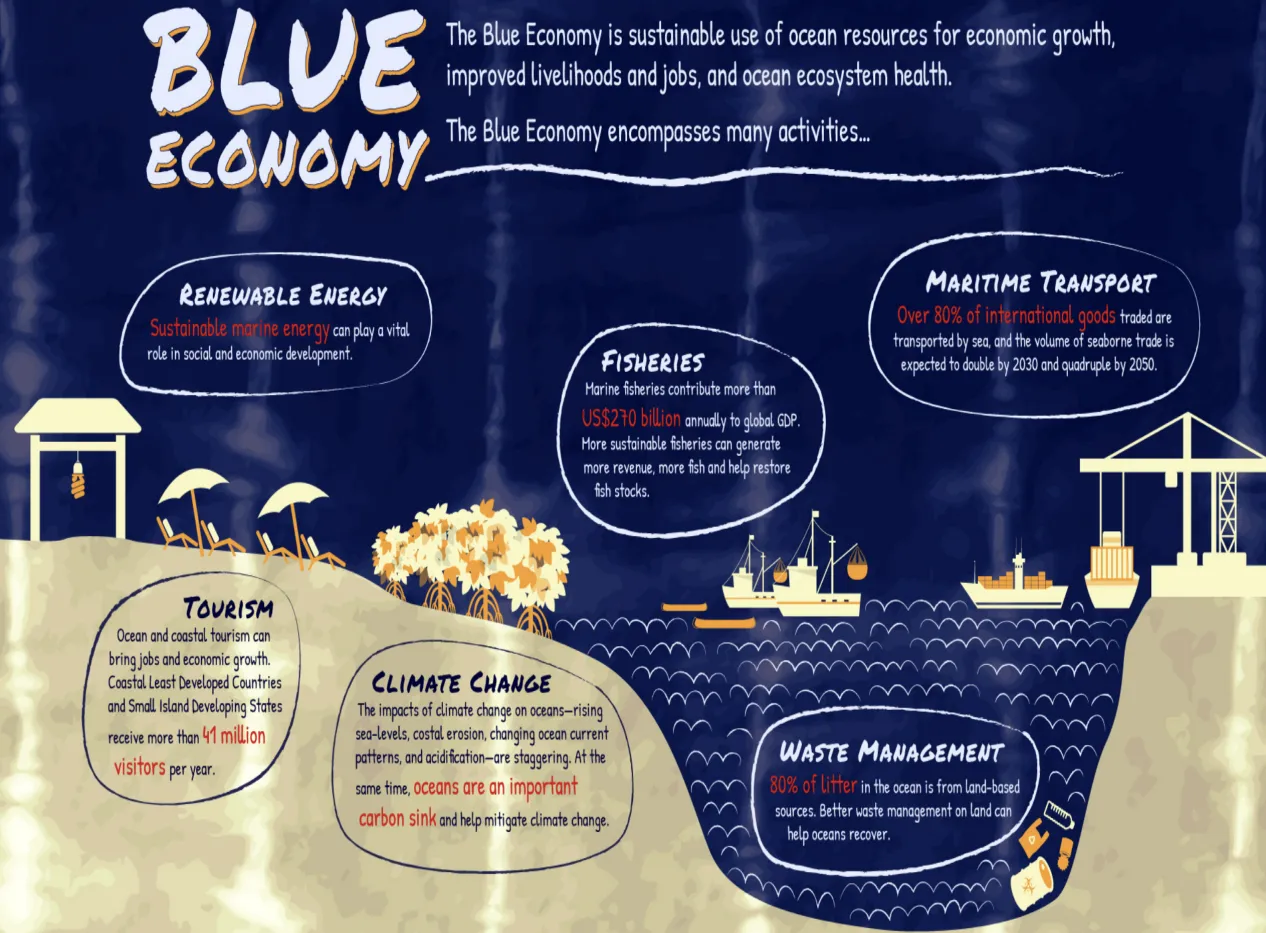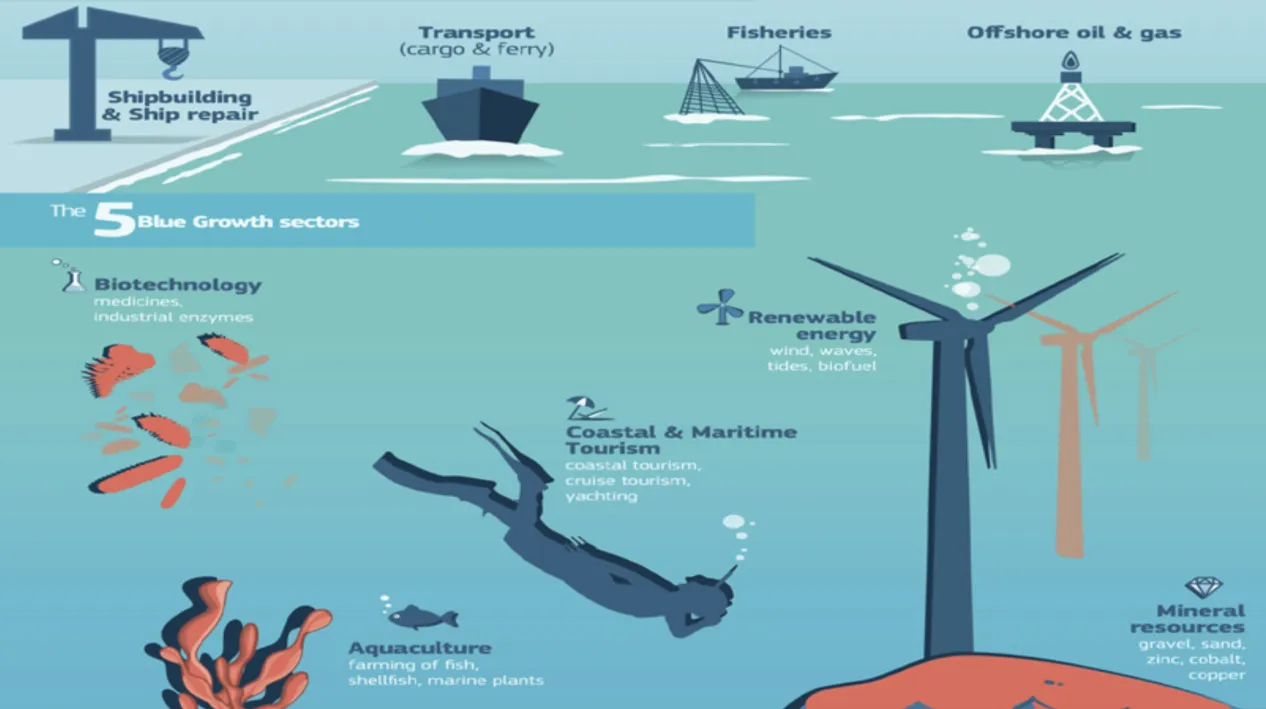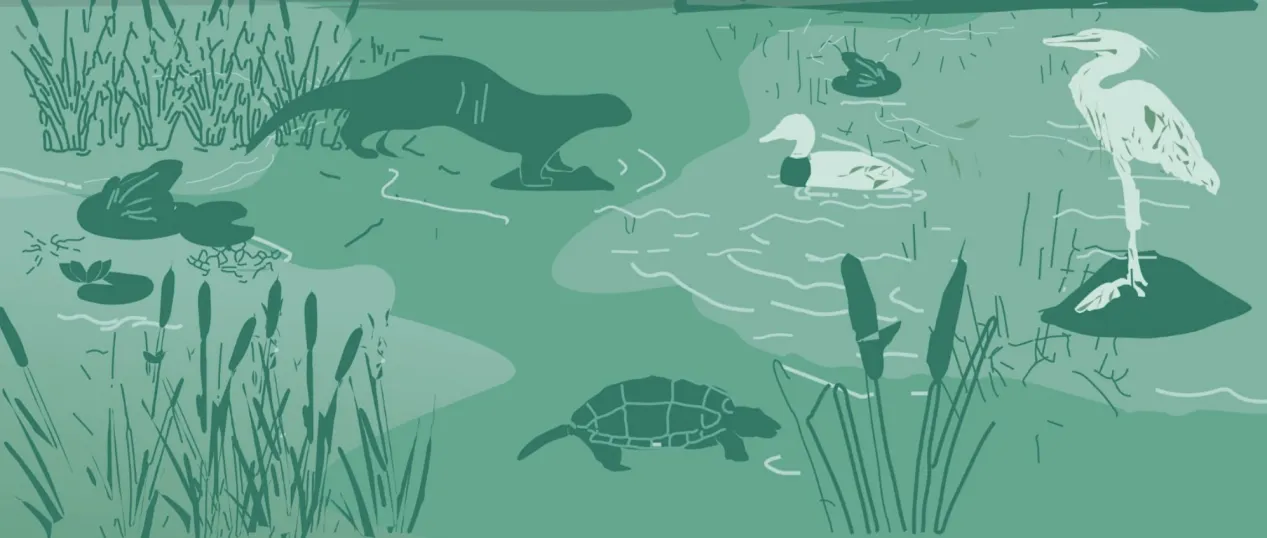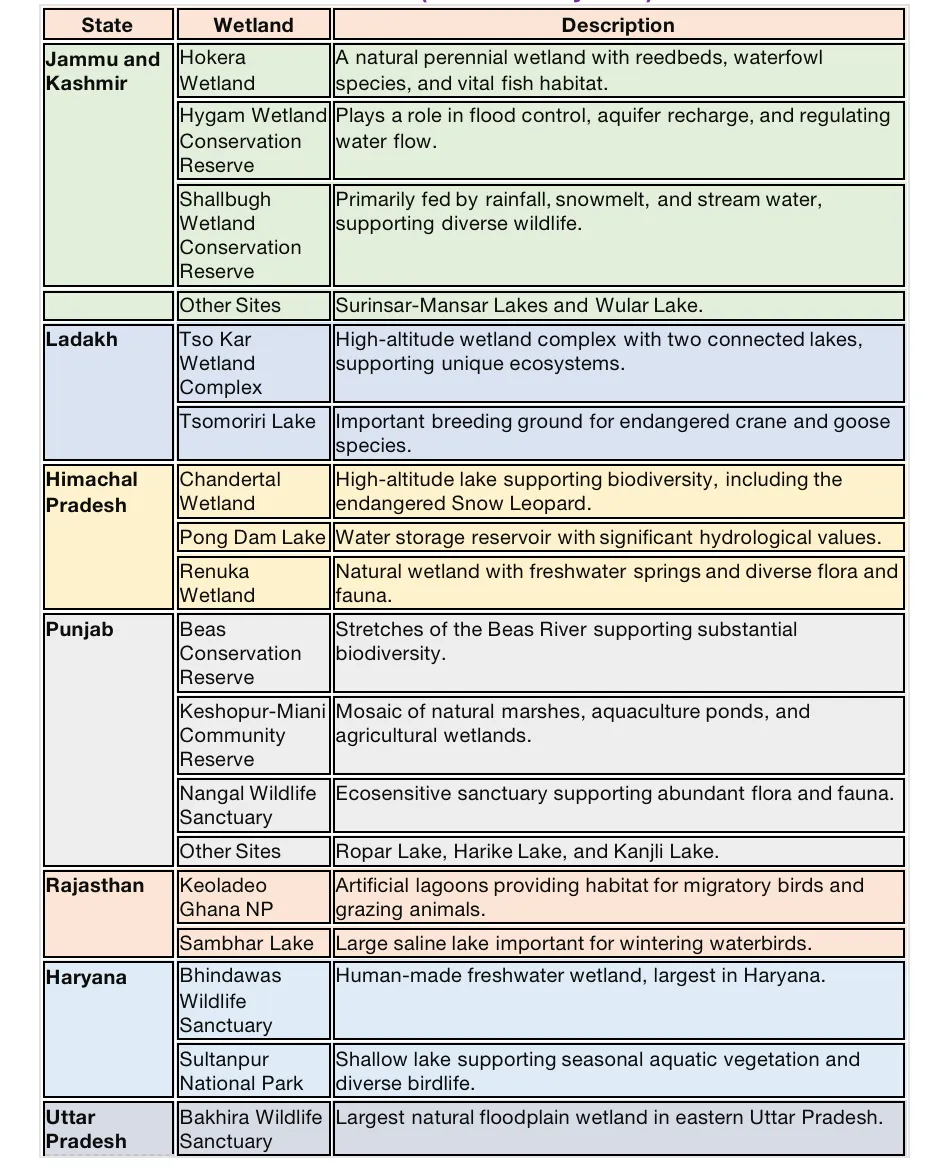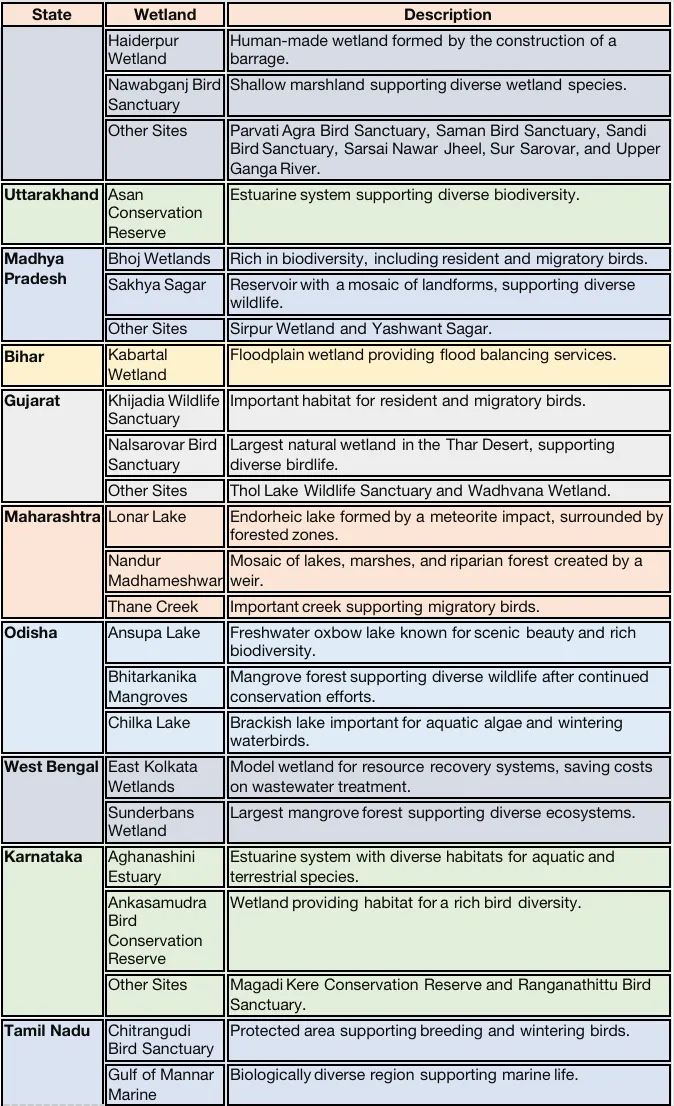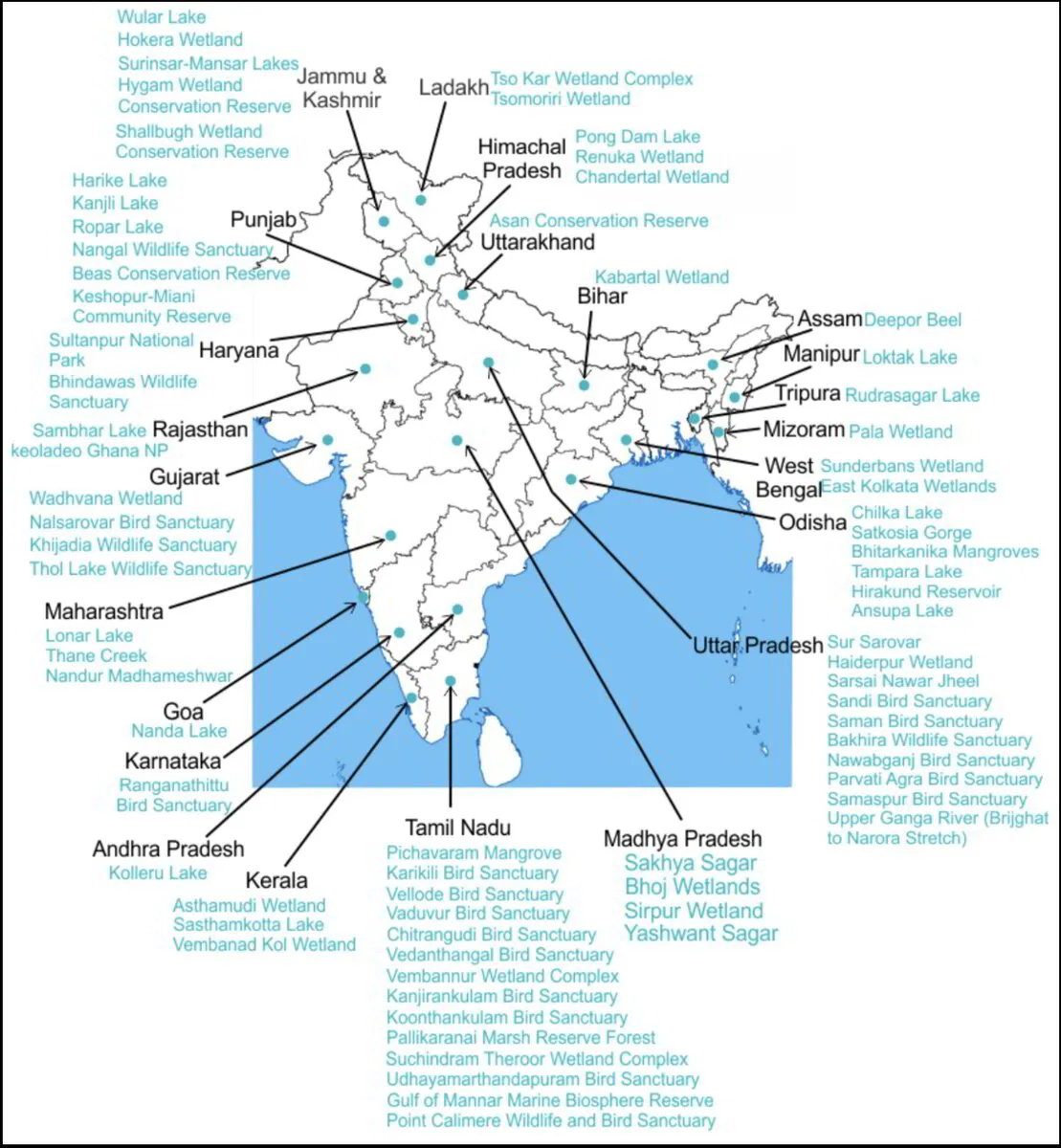Yojana Magazine Summary(April 2024)
Home >Yojana Magazine Summary
Chapter 1: Geological ecosystem
India ranks as the 5th largest country globally, boasting significant geographical and geological diversity, from the towering Himalayas, among the world's highest mountain ranges, to the extensive low-lying coastal plains along the Indian Ocean.
- World's Highest Mountain Range: Separates India from the Tibetan Plateau.
- Formation
- Created by the collision of the Indian plate with the Eurasian plate.
- Resulted in a large fold mountain system along the northern fringes of the Indian subcontinent.
- Geographical Span
- Runs from west-northwest to east-southeast for about 2,400 km.
- Extends across five Southeast Asian countries.
- Width varies: 350 km in the west to 150 km in the east.
- Mountain Ranges
Consists of four parallel ranges: Shivalik Hills, Lower Himalayan Range (Himachal), Great Himalayan Range (Himadri), and Tibetan Himalayas (from south to north). - Key Features of the Great Himalayas
1. Highest Peaks: Includes peaks like Mount Everest, Kanchenjunga, Nanga Parbat.
2. Glaciers: Contains several glaciers, such as Gangotri Glacier and Satopanth Glacier.
Northern Plains
The Northern Plains, also known as the ‘Great Plains of India’, are among the world's most extensive alluvial tracts.
- Geographic Extent
1. The plains extend approximately 2400 km from west to east.
2. They stretch between 240 to 320 km from north to south. - Formation
1. Formed from sediments brought by rivers originating from the Himalayas.
2. Deposited in a foreland basin as the rivers descend and lose velocity. - Bhabar Region
1. Located along the foothills where denser and coarser sediments are deposited.
2. A narrow, porous strip about 8 to 16 km wide.
- Terai Belt
1. Situated south of the Bhabar belt where streams resurface.
2. Densely forested with diverse flora and fauna.
3. Home to national parks like Jim Corbett National Park (Uttarakhand) and Kaziranga National Park (Assam). - Bhangar
1. An older alluvium forming a terrace above the floodplain.
2. Often covered in calcareous pebbles called ‘Kankar’. - River Sediment Deposits: Rivers deposit sediments at their mouths, forming the Sundarbans delta, the world's largest delta.
- Sundarbans Delta
1. Mangrove forests provide natural protection against tropical cyclones and tsunamis.
2. Rich in diverse fauna including bird species, the Bengal Tiger, estuarine crocodiles, and Indian Pythons.
Peninsular Plateau
The Peninsular Plateau is the largest physiographic feature of India's landmass.
- Topography
1. Characterized by table-land type topography.
2. Elevations range from 900 to 1200 meters above mean sea level.
3. Dissected by numerous rivers, forming broad valleys. - Geographic Extent: Extends from the Aravalli Range in the west to the Chota Nagpur Plateau in the east.
- Mountain Ranges
1. Includes significant mountain ranges such as Vindhyans, Satpuras, Mahadeo, Maikal, and Sarguja.
2. Also comprises the Western and Eastern Ghats. - Mineral Resources
1. Rich in mineral deposits like iron, bauxite, mica, gold, copper, manganese, etc.
2. Hosts renowned mines such as Kolar, Hutti, Bailadila, Singhbhum, Korba, and Malanjkhand. - Coal Deposits: Contains most of India's Gondwana coal deposits.
- Soil: A large portion is covered with fertile black soil, ideal for growing cotton.
Thar Desert
The Thar Desert, also referred to as the ‘Great Indian Desert’, spans a vast arid region primarily in the northwestern part of the Indian subcontinent.
- Terrain
Comprises sand dunes, rocky landscapes, salt flats, and limited vegetation. - Sand Dunes: Sand dunes, known as ‘bhakhar’, can reach heights up to 150 meters and constantly shift due to wind action.
- Dry Riverbeds
Dry riverbeds, called ‘nullahs’, occasionally fill with water during the monsoon season. - Natural Resources
Rich in oil reserves, hosting one of India's largest onshore oil fields in the Barmer Basin. - Salt Marsh:
1. Features one of the world's largest salt marshes, the ‘Great Rann of Kutch’.
2. Kutch is a major salt-producing district in India.
Andaman and Nicobar Islands
The Andaman and Nicobar Islands comprise an archipelago consisting of approximately 572 islands, with only about 37 inhabited.
- Natural Beauty
Renowned for their unspoiled beaches, verdant tropical forests, and diverse marine ecosystems. - Geological Origin
1. Primarily of volcanic origin, formed by lava eruptions resulting from plate movements.
2. Barren Island in the Andaman Sea stands as India's sole active volcano. - Lakshadweep Islands
1. Another cluster of islands off the west coast of India, the Lakshadweep archipelago consists of 36 islands.
2. These islands are predominantly coral formations, boasting unique marine flora and fauna.
In conclusion, India possesses abundant mineral resources and ranks among the world's top producers of coal, iron ore, bauxite, manganese, mica, and zinc. The country's geological ecosystems have not just influenced its mineral wealth but have also contributed to shaping its distinctive geographical features.
Chapter 2: From Peaks to Valleys: A Holistic Exploration of the Western Ghats
The Western Ghats, also called the Sahyadri Mountain Range, are celebrated as a global biodiversity hotspot and commonly known as India's Great Escarpment.
- UNESCO World Heritage Site: Honored with the prestigious designation of a UNESCO World Heritage Site.
- Geographic Extent: Spans latitudes from 8° to 22°N, stretching from the Tapti River in the north to Kanyakumari in the south.
- Regional Coverage: Encompasses areas in six states: Gujarat, Maharashtra, Goa, Karnataka, Kerala, and Tamil Nadu, as well as one Union Territory (Dadra & Nagar Haveli).
Geographic Features
The Western Ghats belong to the Malabar Rainforest Biogeographic Province, holding considerable geomorphic value.
- Biodiversity
Positioned uniquely, the Western Ghats are exceptionally biodiverse, serving as a vital repository of biological wealth. - Geological History
Older than the Himalayas, these mountains serve as an 'evolutionary ecotone,' providing evidence for both the 'Out of Africa' and 'Out of India' hypotheses. - Formation
1. Formed millions of years ago during the collision of the Indian subcontinent with the Eurasian plate.
2. The collision thrust the land upwards, resulting in the majestic peaks of the Western Ghats. - Elevation
1. With an average elevation of about 1,200 meters (3,900 ft), the Western Ghats feature peaks reaching heights up to 2,600 meters (8,500 ft).
2. Anamudi, situated in Kerala, stands as the highest peak in the range. - Hydrological Importance
1. Serve as a watershed for major rivers like the Godavari, Krishna, Kaveri, and Tungabhadra.
2. These rivers provide water for irrigation, drinking, and hydropower generation to millions. - Climate Regulation
Play a crucial role in modulating India’s climate by intercepting monsoon winds, thus maintaining cool, dry conditions in the Deccan Plateau.
Andaman and Nicobar Islands
The Andaman and Nicobar Islands comprise an archipelago consisting of approximately 572 islands, with only about 37 inhabited.
- Natural Beauty
Renowned for their unspoiled beaches, verdant tropical forests, and diverse marine ecosystems. - Geological Origin
1. Primarily of volcanic origin, formed by lava eruptions resulting from plate movements.
2. Barren Island in the Andaman Sea stands as India's sole active volcano. - Lakshadweep Islands
1. Another cluster of islands off the west coast of India, the Lakshadweep archipelago consists of 36 islands.
2. These islands are predominantly coral formations, boasting unique marine flora and fauna.
In conclusion, India possesses abundant mineral resources and ranks among the world's top producers of coal, iron ore, bauxite, manganese, mica, and zinc. The country's geological ecosystems have not just influenced its mineral wealth but have also contributed to shaping its distinctive geographical features.
Andaman and Nicobar Islands
The Andaman and Nicobar Islands comprise an archipelago consisting of approximately 572 islands, with only about 37 inhabited.
- Natural Beauty
Renowned for their unspoiled beaches, verdant tropical forests, and diverse marine ecosystems. - Geological Origin
1. Primarily of volcanic origin, formed by lava eruptions resulting from plate movements.
2. Barren Island in the Andaman Sea stands as India's sole active volcano. - Lakshadweep Islands
1. Another cluster of islands off the west coast of India, the Lakshadweep archipelago consists of 36 islands.
2. These islands are predominantly coral formations, boasting unique marine flora and fauna.
In conclusion, India possesses abundant mineral resources and ranks among the world's top producers of coal, iron ore, bauxite, manganese, mica, and zinc. The country's geological ecosystems have not just influenced its mineral wealth but have also contributed to shaping its distinctive geographical features.
Andaman and Nicobar Islands
The Andaman and Nicobar Islands comprise an archipelago consisting of approximately 572 islands, with only about 37 inhabited.
- Natural Beauty
Renowned for their unspoiled beaches, verdant tropical forests, and diverse marine ecosystems. - Geological Origin
1. Primarily of volcanic origin, formed by lava eruptions resulting from plate movements.
2. Barren Island in the Andaman Sea stands as India's sole active volcano. - Lakshadweep Islands
1. Another cluster of islands off the west coast of India, the Lakshadweep archipelago consists of 36 islands.
2. These islands are predominantly coral formations, boasting unique marine flora and fauna.
In conclusion, India possesses abundant mineral resources and ranks among the world's top producers of coal, iron ore, bauxite, manganese, mica, and zinc. The country's geological ecosystems have not just influenced its mineral wealth but have also contributed to shaping its distinctive geographical features.
Andaman and Nicobar Islands
The Andaman and Nicobar Islands comprise an archipelago consisting of approximately 572 islands, with only about 37 inhabited.
- Natural Beauty
Renowned for their unspoiled beaches, verdant tropical forests, and diverse marine ecosystems. - Geological Origin
1. Primarily of volcanic origin, formed by lava eruptions resulting from plate movements.
2. Barren Island in the Andaman Sea stands as India's sole active volcano. - Lakshadweep Islands
1. Another cluster of islands off the west coast of India, the Lakshadweep archipelago consists of 36 islands.
2. These islands are predominantly coral formations, boasting unique marine flora and fauna.
In conclusion, India possesses abundant mineral resources and ranks among the world's top producers of coal, iron ore, bauxite, manganese, mica, and zinc. The country's geological ecosystems have not just influenced its mineral wealth but have also contributed to shaping its distinctive geographical features.
Andaman and Nicobar Islands
The Andaman and Nicobar Islands comprise an archipelago consisting of approximately 572 islands, with only about 37 inhabited.
- Natural Beauty
Renowned for their unspoiled beaches, verdant tropical forests, and diverse marine ecosystems. - Geological Origin
1. Primarily of volcanic origin, formed by lava eruptions resulting from plate movements.
2. Barren Island in the Andaman Sea stands as India's sole active volcano. - Lakshadweep Islands
1. Another cluster of islands off the west coast of India, the Lakshadweep archipelago consists of 36 islands.
2. These islands are predominantly coral formations, boasting unique marine flora and fauna.
In conclusion, India possesses abundant mineral resources and ranks among the world's top producers of coal, iron ore, bauxite, manganese, mica, and zinc. The country's geological ecosystems have not just influenced its mineral wealth but have also contributed to shaping its distinctive geographical features.
Chapter 2
From Peaks to Valleys: A Holistic Exploration of the Western Ghats
Subdivision of Western Ghats
- Northern Ghats
Spanning from Gujarat to Maharashtra, this section represents the lowest and least rugged part of the Western Ghats. - Central Ghats
Extending from Karnataka to Kerala, this area represents the highest and most rugged portion of the Western Ghats. - Southern Ghat
Stretching from Kerala to Tamil Nadu, this region is the most dissected part of the Western Ghats.
Local Names of Western Ghats
- Sahyadri
Meaning 'the abode of Sahya,' this range is also known as the 'benevolent mountain' for its lush landscapes. It stretches from Gujarat in the north to Maharashtra and Karnataka in the south. - Nilgiri Hills
Signifying 'blue mountains,' this name is attributed to the southernmost section of the Western Ghats, located at the junction of Karnataka, Kerala, and Tamil Nadu. - Sahya Parvatam
Commonly used in Kerala, particularly in the southern reaches of the range, it means 'Sahya Mountains.' - Cardamom Hills
Situated on the Kerala-Tamil Nadu border, these hills derive their name from the cardamom plant, a prominent spice cultivated in the region. - Climate Regulation
Situated on the Kerala-Tamil Nadu border, these hills derive their name from the cardamom plant, a prominent spice cultivated in the region. - Anaimalai Hills
Located in the southern reaches of the Western Ghats along the Kerala-Tamil Nadu border, these hills derive their name from the Tamil word ‘aanai,' meaning 'elephant.'
The dominant vegetation types of Western Ghats:
Biodiversity
The Western Ghats boast one of the highest levels of endemism globally.
- Plant Diversity
1. With a total of 4,000 vascular plant species, 1,500 of which are endemic, accounting for 37.5% of the total.
2. Among the nearly 650 tree species identified, 352 (54%) are exclusive to the Western Ghats. - Animal Diversity
Remarkable diversity includes 179 amphibian species (65% endemic), 157 reptile species (62% endemic), and 219 fish species (53% endemic), showcasing high levels of endemism. - Vegetation Types
The climatic and altitudinal gradient has resulted in various vegetation types such as evergreen, semi-evergreen, moist deciduous, and dry deciduous. - Threatened Species
A minimum of 325 species in the Western Ghats are listed as globally threatened according to the IUCN Red List.
Some of the Fauna Groups found in the Western Ghats:
Threats
The Western Ghats belong to the Malabar Rainforest Biogeographic Province, holding considerable geomorphic value.
- Habitat Loss and Fragmentation
Mainly caused by the expansion of coffee, tea, palm, rubber, and other crop plantations, resulting in extensive deforestation and fragmentation of habitats. - Wildlife Poaching and Deforestation
Threats include wildlife poaching, deforestation, overfishing, and livestock grazing, further exacerbating habitat degradation. - Agrochemical Usage
Extensive use of agrochemicals in plantations contributes to the degradation of natural habitats and ecosystems. - Infrastructure Development
Construction activities such as railway lines, mining operations, and tourist infrastructure in mountainous regions pose significant threats to the Western Ghats' biodiversity and ecosystems.
Conservation and Management
- Legal Framework
Through a robust legal framework, which includes laws like the Environment (Protection) Act, Wildlife (Protection) Act, Forest Rights Act, and declaration of Eco-Sensitive Zones (ESZ), efforts have been made to provide legal protection to wildlife and habitats, designate protected areas, and recognize the rights of forest-dwelling communities. - Key Institutions
Institutions and agencies such as the Ministry of Environment, Forests, and Climate Change, State Forest Departments, and the National Biodiversity Authority play pivotal roles in overseeing conservation efforts across the Western Ghats. - Specific Initiatives
Specific initiatives have been undertaken, such as expanding the protected area network, implementing Project Tiger for tiger conservation, and launching national missions like the Green India Mission and the National River Conservation Plan. - Persistent Challenges
Challenges persist, including the effective implementation of policies, balancing development with conservation, ensuring interstate coordination, and addressing emerging climate change issues.
Way Forward
- Future Priorities
Priorities include strengthening enforcement mechanisms, promoting sustainable development practices, enhancing collaboration among stakeholders, investing in research and monitoring, and addressing the challenges posed by climate change. - Crucial Collaboration
Collaboration among the Government, local communities, NGOs, and other stakeholders remains crucial for the successful conservation of the Western Ghats.
Chapter 3: Soil Ecosystem
The soil ecosystem comprises a dynamic and diverse community of organisms and abiotic factors that sustain life on Earth.
- Vital Role: Soil plays a vital role in terrestrial ecosystems and human well-being, from nutrient cycling to habitat support.
- Interconnected Components: The components and functions of the soil ecosystem are interconnected through intricate networks of relationships and feedback loops.
Components of the Soil Ecosystem
- Physical Environment: The physical properties like texture, structure, and moisture content form the basis of the soil ecosystem. These factors dictate the distribution and behavior of organisms within the soil profile.
- Organic Matter: The organic component of soil consists of dead plant and animal material, along with living organisms such as microbes, fungi, and earthworms. Organic matter serves as a source of nutrients and energy, crucial for soil fertility and structure.
- Microorganisms: Soil harbors abundant microorganisms like bacteria, fungi, and protozoa, which are essential for nutrient cycling, decomposition, and soil health. They break down organic matter, fix nitrogen, and contribute to soil aggregation.
- Macroorganisms: Larger soil inhabitants, including earthworms, insects, nematodes, and small mammals, contribute to nutrient cycling, soil aeration, and soil structure formation. Their activities influence soil fertility and ecosystem functioning.
- Plant Roots: Plant roots play a vital role by anchoring plants, absorbing water and nutrients, and releasing root exudates that fuel microbial activity. They also contribute to soil organic matter, shaping soil microbial communities and nutrient cycling processes.
Functions of the Soil Ecosystem
- Nutrient Cycling: Soil organisms decompose organic matter, releasing essential nutrients like nitrogen, phosphorus, and potassium into the soil. These nutrients are then absorbed by plants, promoting growth and productivity.
- Decomposition: Microorganisms and detritivores break down organic matter, recycling nutrients and returning them to the soil. Decomposition processes contribute to soil fertility and the accumulation of organic matter.
- Soil Formation: Soil develops over time from parent material through weathering and biological processes. Soil organisms, particularly earthworms and soil microorganisms, play a crucial role in mixing and transforming soil materials, thus contributing to soil formation.
- Water Regulation: Soil serves as a reservoir for water, storing and slowly releasing it over time. Soil structure and organic matter content influence water infiltration, retention, and drainage, impacting plant growth, groundwater recharge, and flood mitigation.
- Habitat Support: Soil provides a habitat for a diverse range of organisms, from microscopic bacteria to larger mammals. Soil structure and organic matter content determine habitat quality, supporting biodiversity within terrestrial ecosystems.
Interconnectedness in the Soil Ecosystem
- Intricate Networks: The components and functions of the soil ecosystem are intricately interconnected through relationships and feedback loops.
- Example of Interconnection: Plant roots release sugars and other compounds into the soil, providing energy for the growth of soil microbes. In return, these microbes assist in nutrient uptake by plants and contribute to soil aggregation and structure formation.
- Earthworms' Role: Earthworms play a significant role by ingesting soil organic matter and mineral particles, enriching and mixing the soil as they move through it.
Conclusion
The soil ecosystem comprises a dynamic and diverse community of organisms and abiotic factors crucial for sustaining life on Earth. From nutrient cycling to providing habitat support, soil plays a pivotal role in terrestrial ecosystems and human well-being. Recognizing the intricacies of the soil ecosystem is imperative for sustainable land management and ecosystem conservation, safeguarding soil health and productivity for future generations.
Types of Sacred Groves
Based on their association with deities, cultural significance, and religious importance.
- Temple Groves
1. Association: Linked with temples due to their religious significance.
2. Protection: Generally safeguarded by the government, temple trusts, or village committees.
3. Biodiversity: Often home to a wide variety of plants and animals.
4. Examples: Ficus, Neem, and Tamarind trees. - Traditional Sacred Groves
1. Folk Deities
Sites where folk deities reside, such as Potharaju, Yellamma, Polamma, Maridimma in Andhra Pradesh, Sammakka-Sarakka Grama Devathalu in Telangana, Kavus in Kerala, and Gumpa Groves in Sikkim.
2. Biodiversity
Typically rich in plant and animal life. - Religious Groves
1. Religious Associations: Connected with religions like Hinduism, Buddhism, Jainism, Islam, and Sikhism.
2. Protection: Traditionally maintained by local communities through religious beliefs and customs, rather than formal government legislation. - Island Groves: Classified based on habitat-specific ecological significance, such as mangroves and coastal/riverine areas in Andhra Pradesh.
Conclusion
The soil ecosystem comprises a dynamic and diverse community of organisms and abiotic factors crucial for sustaining life on Earth. From nutrient cycling to providing habitat support, soil plays a pivotal role in terrestrial ecosystems and human well-being. Recognizing the intricacies of the soil ecosystem is imperative for sustainable land management and ecosystem conservation, safeguarding soil health and productivity for future generations.
Chapter 5: Blue Economy
According to the World Bank, the blue economy involves the sustainable development of ocean resources to foster economic growth, enhance livelihoods, and create jobs while maintaining the health of ocean ecosystems.
India's Coastal Resources
- Coastline and EEZ: India has a coastline of over 7500 km and an Exclusive Economic Zone (EEZ) of more than 2.2 million sq km.
- Ports: India has 200 ports, including 12 major ports, with Mormugao Port handling the highest traffic.
- Fishermen: The coastal economy supports over 4 million fishermen.
- Fish Production: India is the second-largest fish-producing nation with a fleet of 250,000 fishing boats.
- GDP Contribution: The blue economy contributes roughly 4% to India’s GDP, with potential for growth.
- Global Contributions
- Blue Economy Concept: Introduced by Gunter Pauli in his book "The Blue Economy: 10 Years, 100 Innovations, 100 Million Jobs."
- World Bank Definition: Sustainable development of ocean resources for economic growth, improved livelihoods, and job creation while preserving ocean health.
- Growth Sectors: Fisheries, aquaculture, coastal tourism, offshore wind installations, shipping, ports, and coastal agriculture are key sectors driving growth.
- Return on Investment: Research shows that USD 1 invested in ocean activities yields USD 5 in return, highlighting the economic potential
- Diverse Activities of the Blue Economy
1. Renewable Energy:
Importance: Sustainable marine energy sources like offshore wind and wave energy promote social and economic development.
- Goal: Reduces reliance on non-renewable energy sources.
2. Fisheries:
Importance: Sustainable fisheries management ensures a continuous fish supply, generates revenue, and supports economic and environmental objectives.
- Goal: Contributes to the restoration of fish stocks.
3. Maritime Transport:
Significance: Maritime transport is fundamental to the global economy, facilitating trade and connecting nations.
- Statistics: Over 80% of international goods are transported by sea.
4. Tourism:
- Role: Ocean and coastal tourism provide recreational opportunities, job creation, and economic growth.
- Importance: Key component of the blue economy.
5. Climate Change:
- Carbon Sink: Oceans act as crucial carbon sinks, absorbing and storing carbon dioxide (blue carbon).
- Impact: Mitigates climate change by reducing greenhouse gas concentrations in the atmosphere.
6. Waste Management:
- Integral Role: Effective waste management on land is vital for ocean health.
- Objective: Proper waste disposal practices prevent pollution, marine debris, and environmental degradation.
- Result: Fosters ocean recovery and preservation.
7.Ocean Resources
The ocean and its Exclusive Economic Zone (EEZ) present significant economic potential, encompassing a wide array of both biotic and abiotic resources.
- Fisheries and Aquaculture:
- Contribution to Economy: Fisheries, divided into marine and inland categories, contributed Rs. 46,663 crore through exports in 2019-20.
- Production Growth: Aquaculture production has witnessed significant growth over the past decade, with fish production increasing from 0.75 MMT in 1950-51 to 14.2 MMT in 2019-20.
- Depletion Concerns: Growing consumption demand and technological advancements pose a risk of depletion of natural fish reserves.
8.Minerals:
- Resource Variety: India's continental margins harbor diverse mineral deposits, including terrigenous, biogenous, and homogenous minerals.
- Examples: Heavy minerals such as ilmenite, magnetite, monazite, zircon, and rutile are found along Indian coastal states.
- Location: Biogenous sediments are reported from various shallow offshore areas, while homogenous deposits like phosphorites and manganese crusts are found in specific regions.
- Deep Ocean Reserves: Reserves of manganese, cobalt, hydrothermal sulphides, and marine gypsum are discovered in the deep ocean, particularly in the Central Indian Ocean Basin.
9.Hydrocarbons:
- Resource Distribution: India possesses 26 sedimentary basins spread across 3.4 million square kilometers, with 39% located in the Exclusive Economic Zone.
- Production Levels: India produces approximately 34 MMT of oil and 33 BCM of gas annually, yet the current consumption exceeds internal resources, leading to dependence on imports.
10.Renewable Energy:
- Scope: Oceanic renewable energy generation from natural phenomena like sunlight, onshore and offshore wind, hydroelectric, tides, and waves offers immense potential.
- Tidal Energy Commercialization: Commercialization of tidal energy, utilizing technologies such as tidal lagoons, reefs, fences, and barrages, has gained momentum.
- Offshore Wind Energy: Offshore wind energy holds significant promise among oceanic renewable energies, with the offshore wind industry being the most developed.
Source of Employment in the Blue Economy
- Fishing and Aquaculture: Traditionally, fishing, aquaculture, and fish processing have provided significant employment opportunities in the blue economy. The sector is transitioning towards commercial practices like aquaculture, demanding a skilled workforce.
- Marine Tourism: Activities such as cruise travel, boating, and scuba diving contribute to employment and economic growth in coastal areas. Coastal tourism supports jobs in hospitality, transportation, and related services.
- Shipping and Ports: Sea ports are major employment hubs, with job opportunities increasing, especially in smaller ports. The logistics sector's growth, fueled by industrial demand, underscores the growing importance of ports in employment generation.
- Shipbuilding: India's shipbuilding industry offers employment to individuals with diverse skills. Enhancing indigenization and self-reliance in the industry could further boost employment.
- Offshore Wind and Marine Biology: Emerging sectors like offshore wind and marine biology present new employment avenues. Sustainable practices in shipbuilding, emphasizing recyclable materials and energy efficiency, contribute to job creation.
Conclusion:
The blue economy is undergoing a transformative journey, transitioning from traditional fishing methods to pioneering sectors such as offshore wind energy and marine biology. Central to unlocking the blue economy's full potential and fostering prosperity for all are initiatives focused on skill development, youth engagement, and the preservation of traditional knowledge.
Chapter 6: The Ramsar Convention on Wetlands
About the Ramsar Convention:
- International Treaty: The Ramsar Convention is an international treaty aimed at promoting "the conservation and sustainable use of wetlands."
- Alternative Name: Also known as the Convention on Wetlands.
- Origin: Named after the city of Ramsar in Iran, where it was initially adopted.
- Date of Adoption: The Convention was signed on February 2, 1971.
- World Wetlands Day: February 2nd of each year is celebrated as World Wetlands Day to raise awareness about the importance of wetlands.
- Number of Parties: Currently, there are 172 parties to the convention (COP), indicating widespread international support.
- Objective: The primary objective is to promote the wise use of wetlands, ensuring the maintenance of their ecological character within the framework of sustainable development.
Ramsar Criteria for Wetlands Selection:
Under the Ramsar Criteria, wetlands are evaluated for inclusion in the Ramsar List based on their international significance in terms of biodiversity and the uniqueness of their ecology, including aspects of botany, zoology, limnology, or hydrology. The criteria emphasize the importance of wetlands to waterbirds as a priority.
Criterion 1: Wetlands are deemed internationally important if they represent a rare or unique example of a natural or near-natural wetland type within the appropriate biogeographic region.
Criterion 2: Wetlands are considered internationally important if they support vulnerable, endangered, or critically endangered species or threatened ecological communities.
Criterion 3: Wetlands are regarded as internationally important if they support populations of plant and/or animal species crucial for maintaining the biological diversity of a specific biogeographic region.
Criterion 4: Wetlands are recognized as internationally important if they support plant and/or animal species at critical stages in their life cycles or provide refuge during adverse conditions.
Criterion 5: Wetlands are designated as internationally important if they regularly support 20,000 or more waterbirds.
Criterion 6: Wetlands are identified as internationally important if they regularly support 1% of the individuals in a population of one species or subspecies of waterbird.
Criterion 7: Wetlands are deemed internationally important if they support a significant proportion of indigenous fish subspecies, species, or families, contributing to global biological diversity.
Andaman and Nicobar Islands
The Andaman and Nicobar Islands comprise an archipelago consisting of approximately 572 islands, with only about 37 inhabited.
- Natural Beauty
Renowned for their unspoiled beaches, verdant tropical forests, and diverse marine ecosystems. - Geological Origin
1. Primarily of volcanic origin, formed by lava eruptions resulting from plate movements.
2. Barren Island in the Andaman Sea stands as India's sole active volcano. - Lakshadweep Islands
1. Another cluster of islands off the west coast of India, the Lakshadweep archipelago consists of 36 islands.
2. These islands are predominantly coral formations, boasting unique marine flora and fauna.
In conclusion, India possesses abundant mineral resources and ranks among the world's top producers of coal, iron ore, bauxite, manganese, mica, and zinc. The country's geological ecosystems have not just influenced its mineral wealth but have also contributed to shaping its distinctive geographical features.

